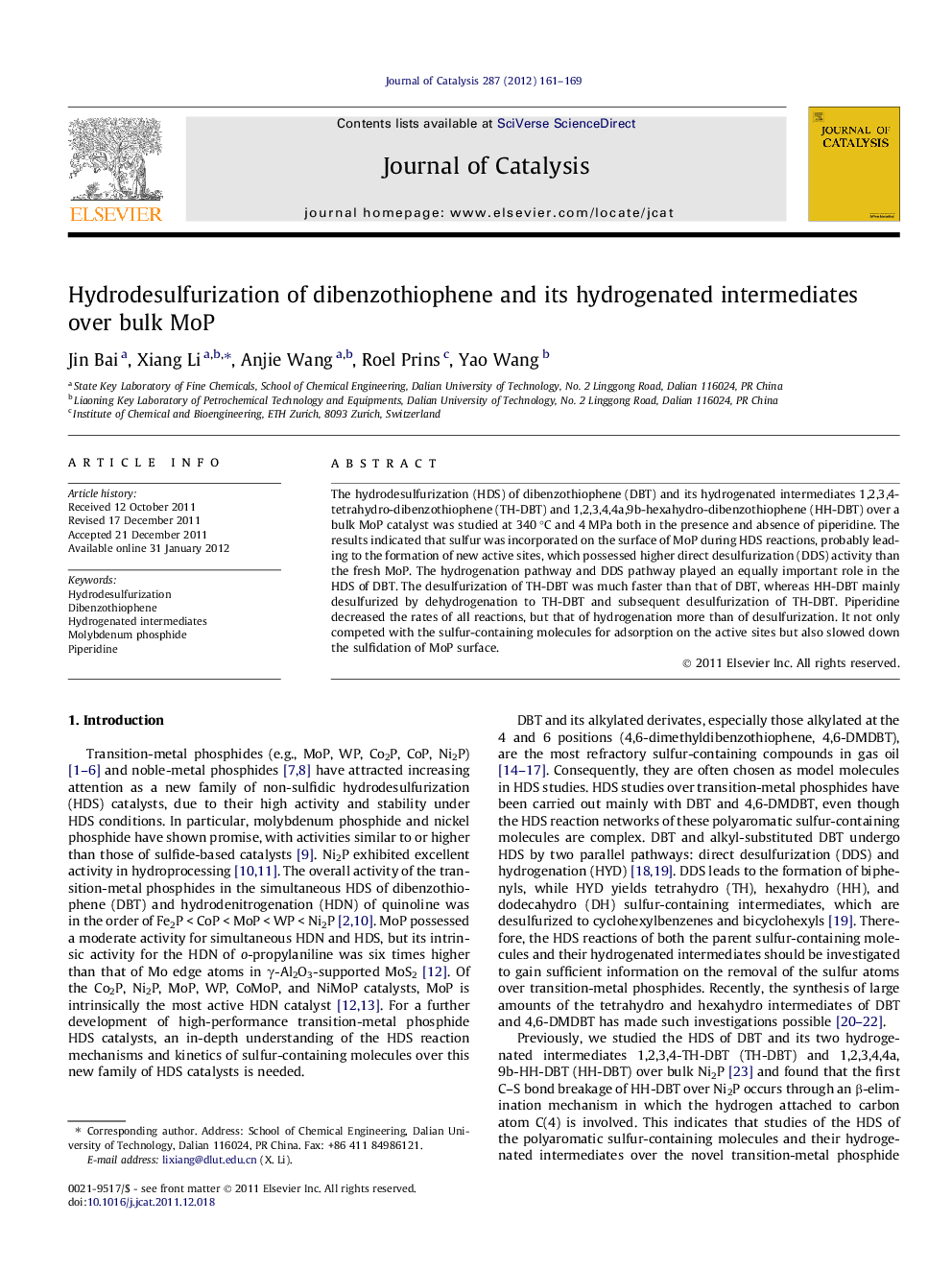| Article ID | Journal | Published Year | Pages | File Type |
|---|---|---|---|---|
| 61509 | Journal of Catalysis | 2012 | 9 Pages |
The hydrodesulfurization (HDS) of dibenzothiophene (DBT) and its hydrogenated intermediates 1,2,3,4-tetrahydro-dibenzothiophene (TH-DBT) and 1,2,3,4,4a,9b-hexahydro-dibenzothiophene (HH-DBT) over a bulk MoP catalyst was studied at 340 °C and 4 MPa both in the presence and absence of piperidine. The results indicated that sulfur was incorporated on the surface of MoP during HDS reactions, probably leading to the formation of new active sites, which possessed higher direct desulfurization (DDS) activity than the fresh MoP. The hydrogenation pathway and DDS pathway played an equally important role in the HDS of DBT. The desulfurization of TH-DBT was much faster than that of DBT, whereas HH-DBT mainly desulfurized by dehydrogenation to TH-DBT and subsequent desulfurization of TH-DBT. Piperidine decreased the rates of all reactions, but that of hydrogenation more than of desulfurization. It not only competed with the sulfur-containing molecules for adsorption on the active sites but also slowed down the sulfidation of MoP surface.
Graphical abstractFigure optionsDownload full-size imageDownload high-quality image (120 K)Download as PowerPoint slideHighlights► Sulfur was incorporated on the surface of MoP in HDS reactions. ► The sulfided MoP possessed higher direct desulfurization activity than fresh MoP. ► Piperidine slowed down the sulfidation of MoP. ► Reaction network and rate constants for all steps in the HDS of DBT over MoP.
